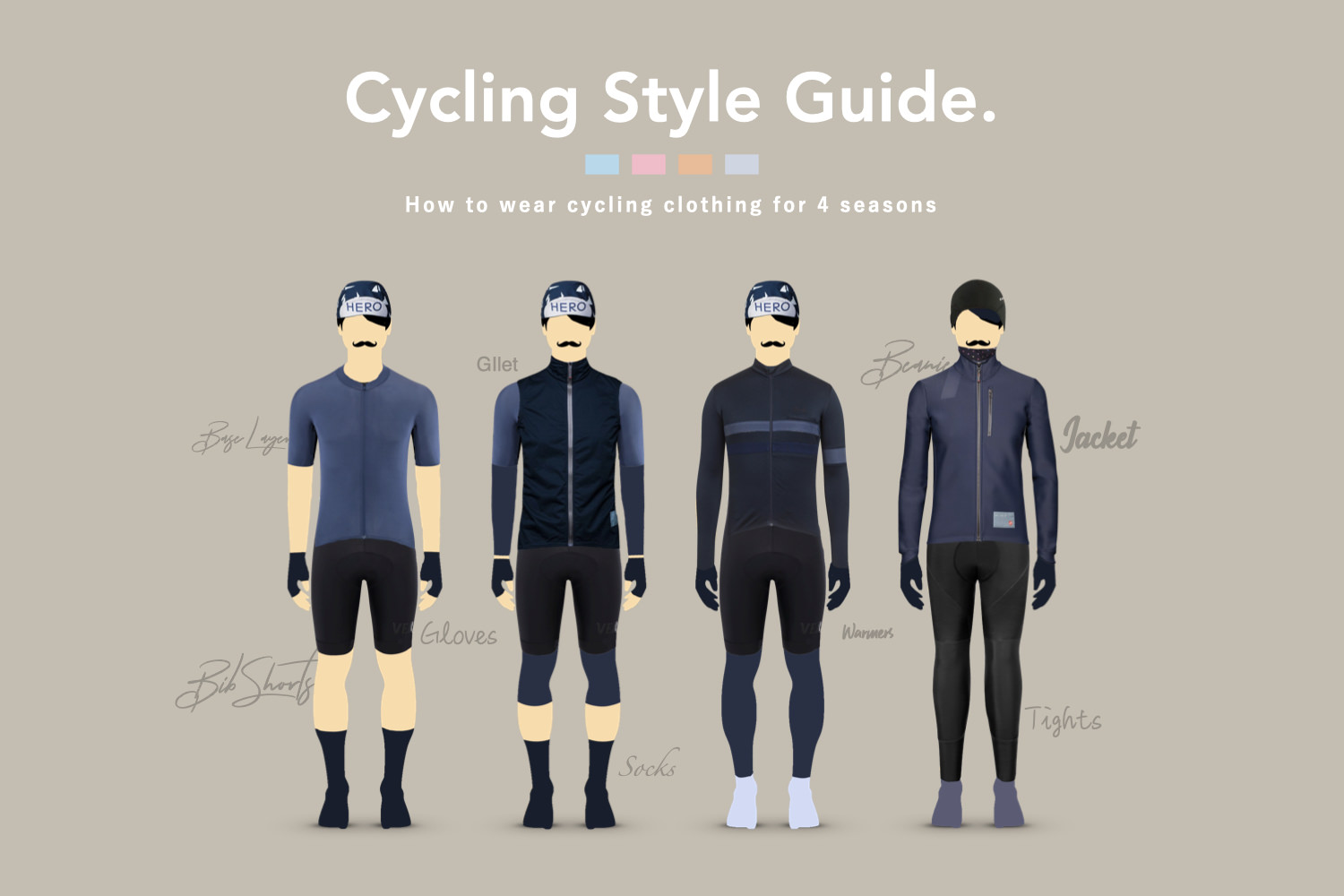
To make your ride comfortable, it is essential to wear the best clothing for each season’s temperature.
However, the trouble with buying all the right clothing is that it is difficult to know which pieces of clothing to wear in combination.
‘Do I need both short-sleeved and long-sleeved jerseys?’ or ‘When should I use gilets, arm warmers, and other warm-weather items?’ etc. Cycling clothing is a category that you have never worn before, so it is difficult to make appropriate decisions in the beginning.
Therefore, for those who want to enjoy dressing up, we will introduce all the types of clothing you should have and how to combine them for each season.
1. 20 items to put on cycling
First of all, we introduce a total of 20 items necessary for dressing up.
You may feel that this is a bit much, but you do not need to buy everything at once.
As the cycle of the four seasons comes full circle over the course of a year, you will naturally have a collection of items that you can wear around the house.
Tops
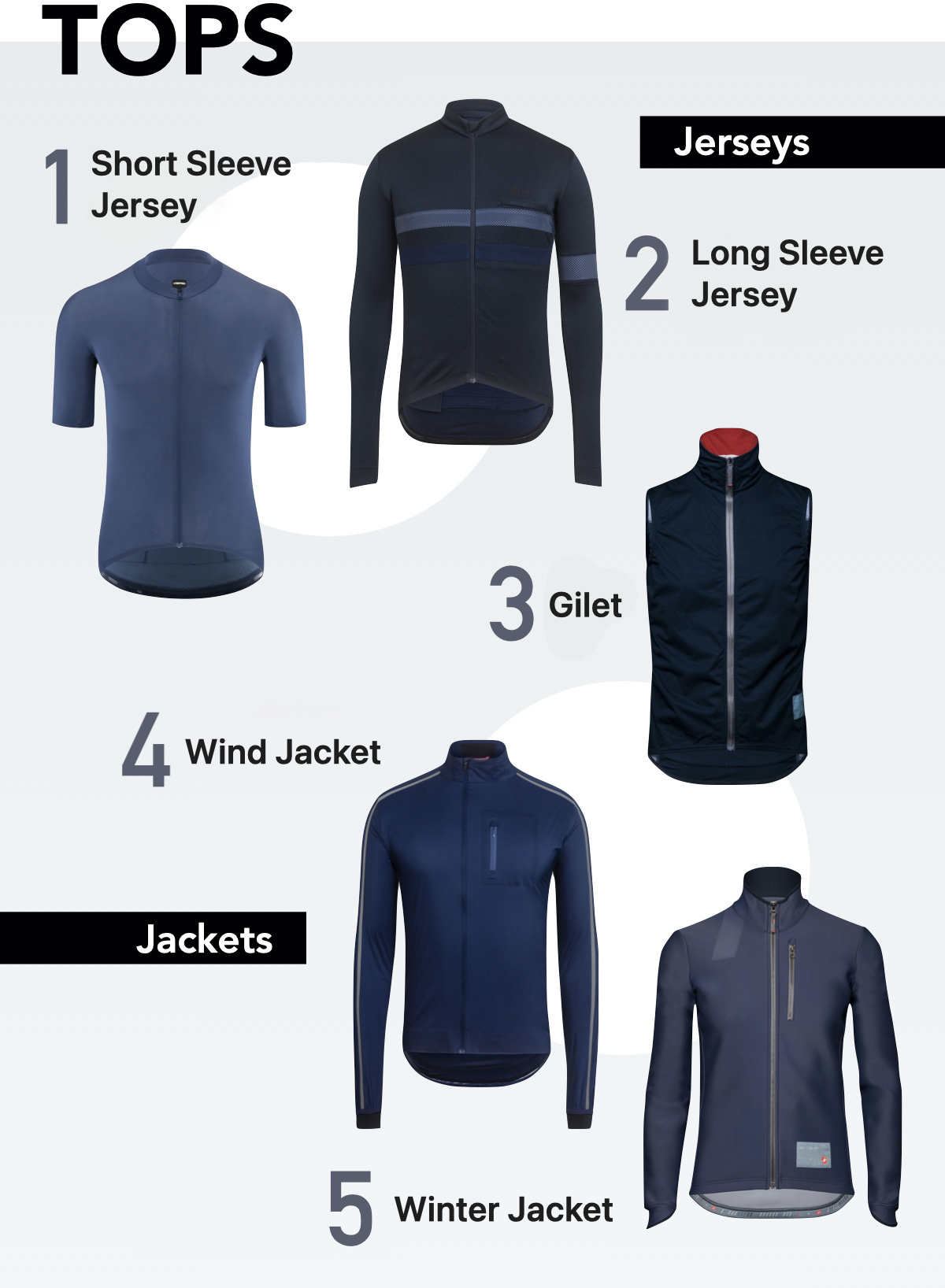
1. Short Sleeve Jersey: The short sleeve jerseys that are most frequently used are those with designs that you like. Sizes that are “a little tight?” is generally the best choice.
2. Long Sleeve Jersey: Long sleeve jersey for 3-season use in spring, fall and winter. Can be combined with a base layer or jacket to expand the range of temperatures supported.
3. Gilet: Also called a vest, this compact warm-weather item keeps the torso cool. It is surprisingly versatile when you have it.
4. Wind Jacket: Thin windproof jacket that folds up to a compact size. Put it in your back pocket and take it out anytime.
5. Winter Jacket: Thick windproof softshell jacket that can shut out cold air. An indispensable outerwear for midwinter riding. High-performance jackets are also waterproof.
Bottoms
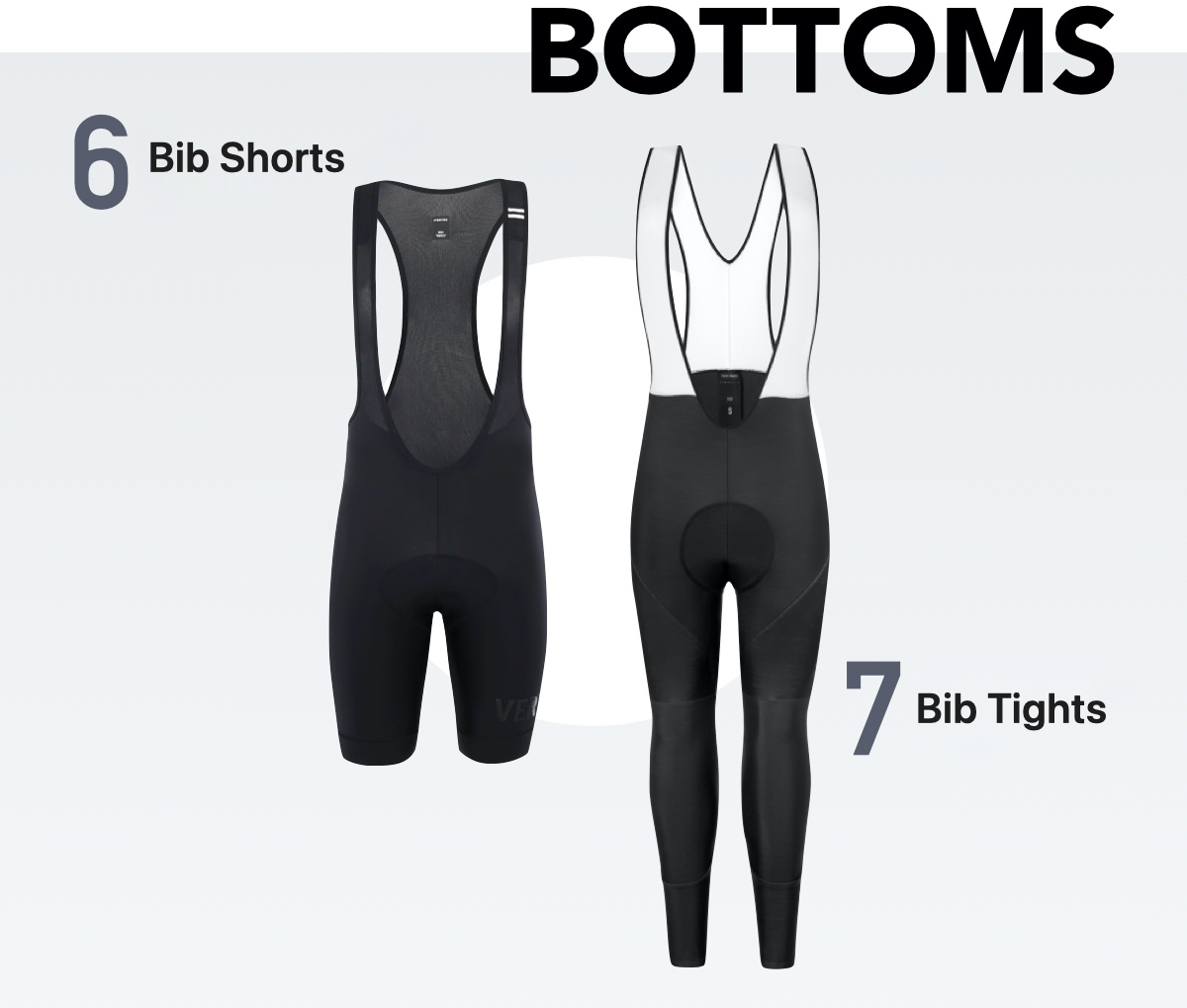
6. Bib Shorts: Like short-sleeved jerseys, bib shorts are often worn year-round. It is easier to wear them if you choose a design similar to plain black. Winter bib shorts with a brushed lining are also available.
7. Bib Tights: In cold weather, it is convenient to start with warm bib tights with a brushed back.
Base Layers
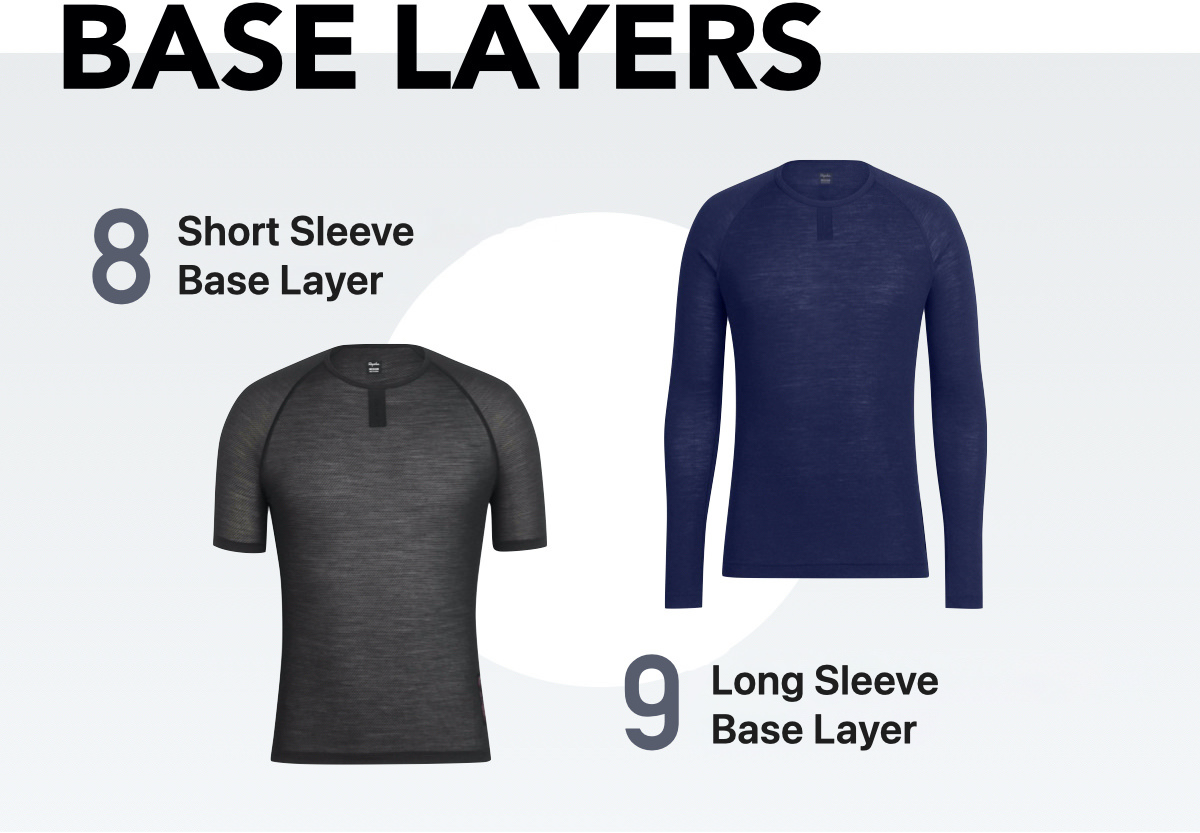
8. Short Sleeve Base Layer: Moisture-absorbing, quick-drying innerwear that allows perspiration to escape. It also keeps you warm in chilly seasons. Sleeveless type is for hot weather.
9. Long Sleeve Base Layer: Since they are worn during the cold season, choose the tightest possible fit with good heat retention and quick-drying properties.
Warmers
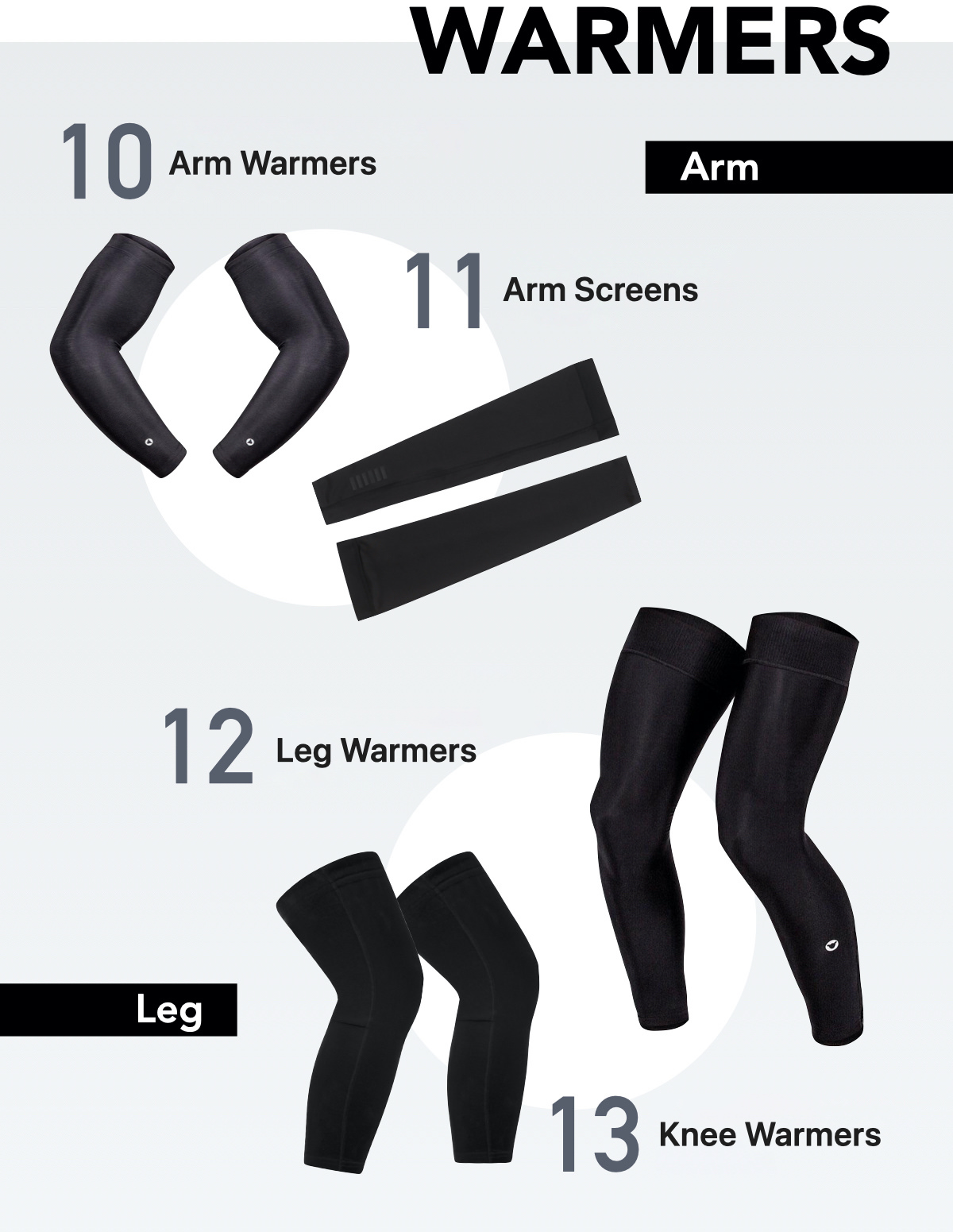
10. Arm Warmers: Used in combination with short sleeve jerseys for warmth in spring and fall.
11. Arm Screens: UV protection items to prevent arm burn in summer. Not necessary if you wear sunscreen.
12. Leg Warmers: Used in combination with bib shorts for winter protection. Covers up to the ankles.
13. Knee Warmers: Used in combination with bib shorts for spring and fall warmth. Covers up to below the knees.
Accesories
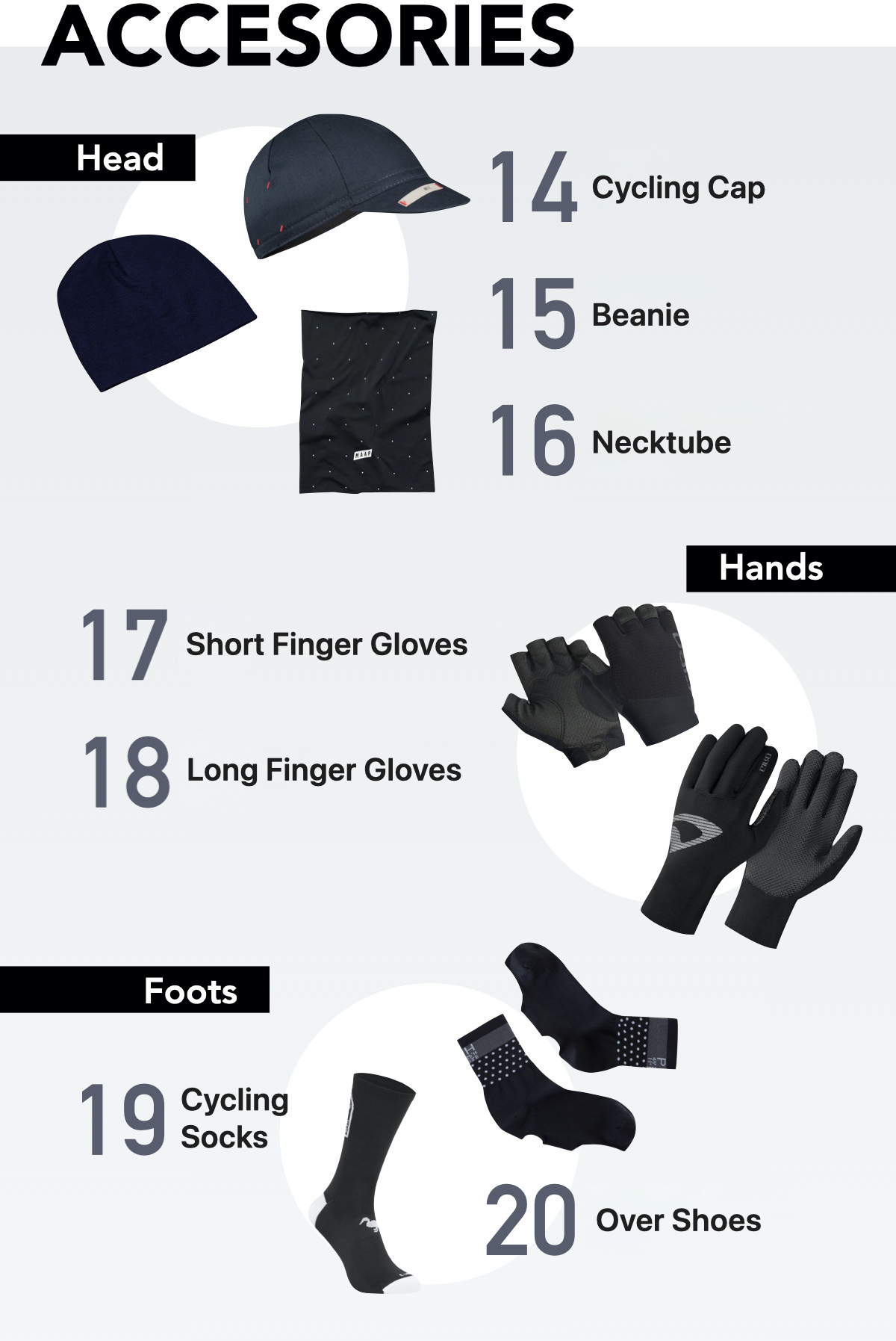
14. Cycling Cap: Cycling caps that protect the head from cold and absorb sweat.
15. Beanie: A hat made of knit material that covers up to the ears. Essential for cyclists whose ears get sore from the cold air. A headband can be substituted depending on the temperature.
16. Necktube: It protects the wind from entering the neck and the face from cold air.
17. Short Finger Gloves: Gloves for spring and summer that do not impair the operability of the shift lever.
18. Long Finger Gloves: Gloves for fall and winter. If possible, two types of gloves, a thin type and a thick type, can be prepared for severe winters.
19. Cycling Socks: Quick-drying socks with excellent fit.
20. Over Shoes: A covering over shoes to protect the toes and other parts of the feet from cold. In winter, it is indispensable to keep the ends of the body warm.
2. Outfit Guide for Seasons
Let’s take a look at how to dress for each season by combining all 20 items, starting with outfit for warmer temperatures.
*The temperatures listed are only a guide, and the optimum combination will vary depending on the individual’s temperature experience.
Outfit for Summer
25°C to 35°C
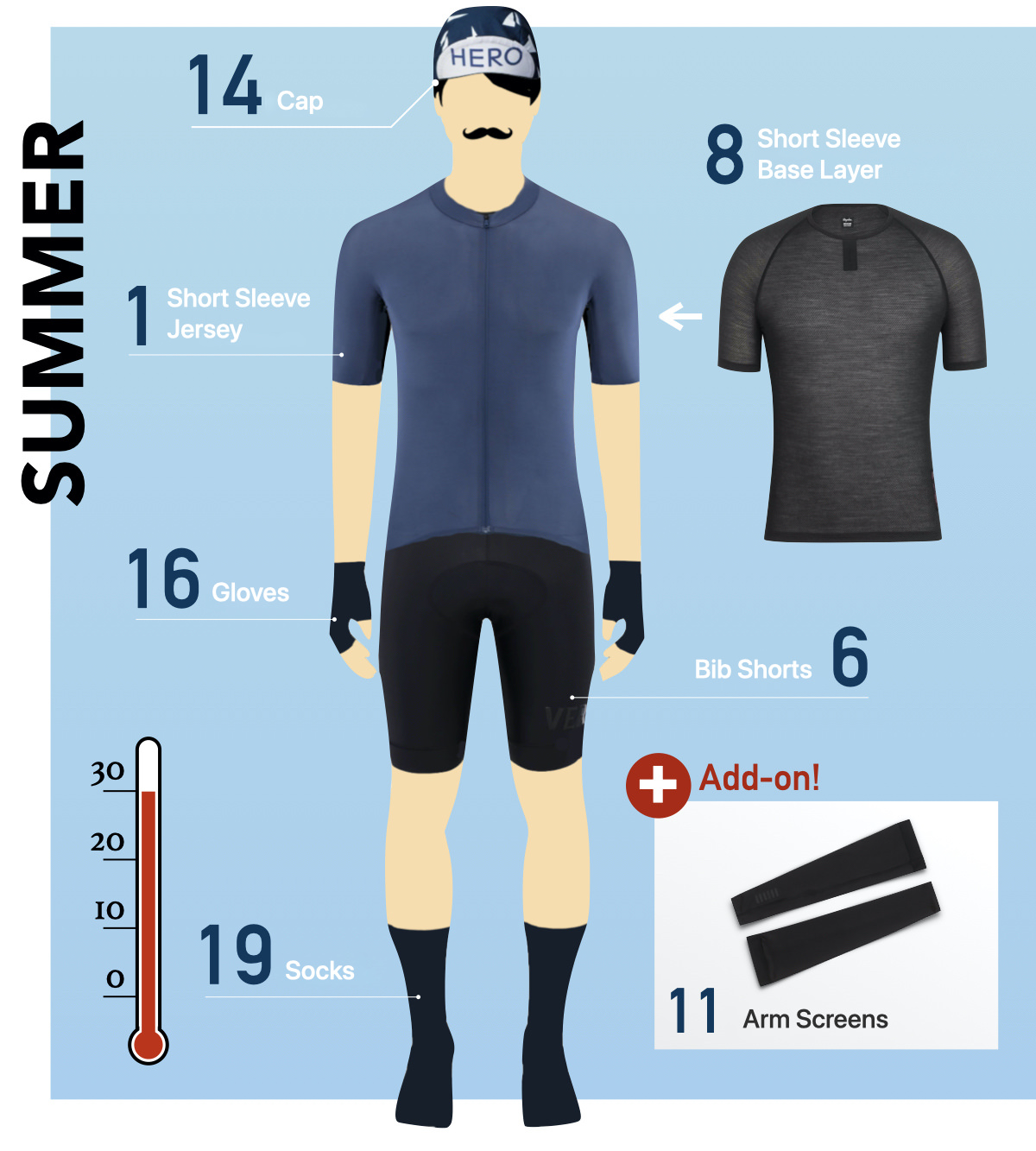
In summer, the first priority is to be comfortable. Therefore, light clothing is worn, with short-sleeved jerseys and bib shorts as the basic attire.
This means that more skin will be exposed, so be sure to take UV protection as well. Sunburn is extremely physically draining and rough on the skin, so arm screens or sunscreen are recommended to protect against sunburn.
It may also be more comfortable to wear a base layer to prevent perspiration chill.
*For more information on summer baselayers, click here.
Outfit for Spring and Fall
15°C to 25°C
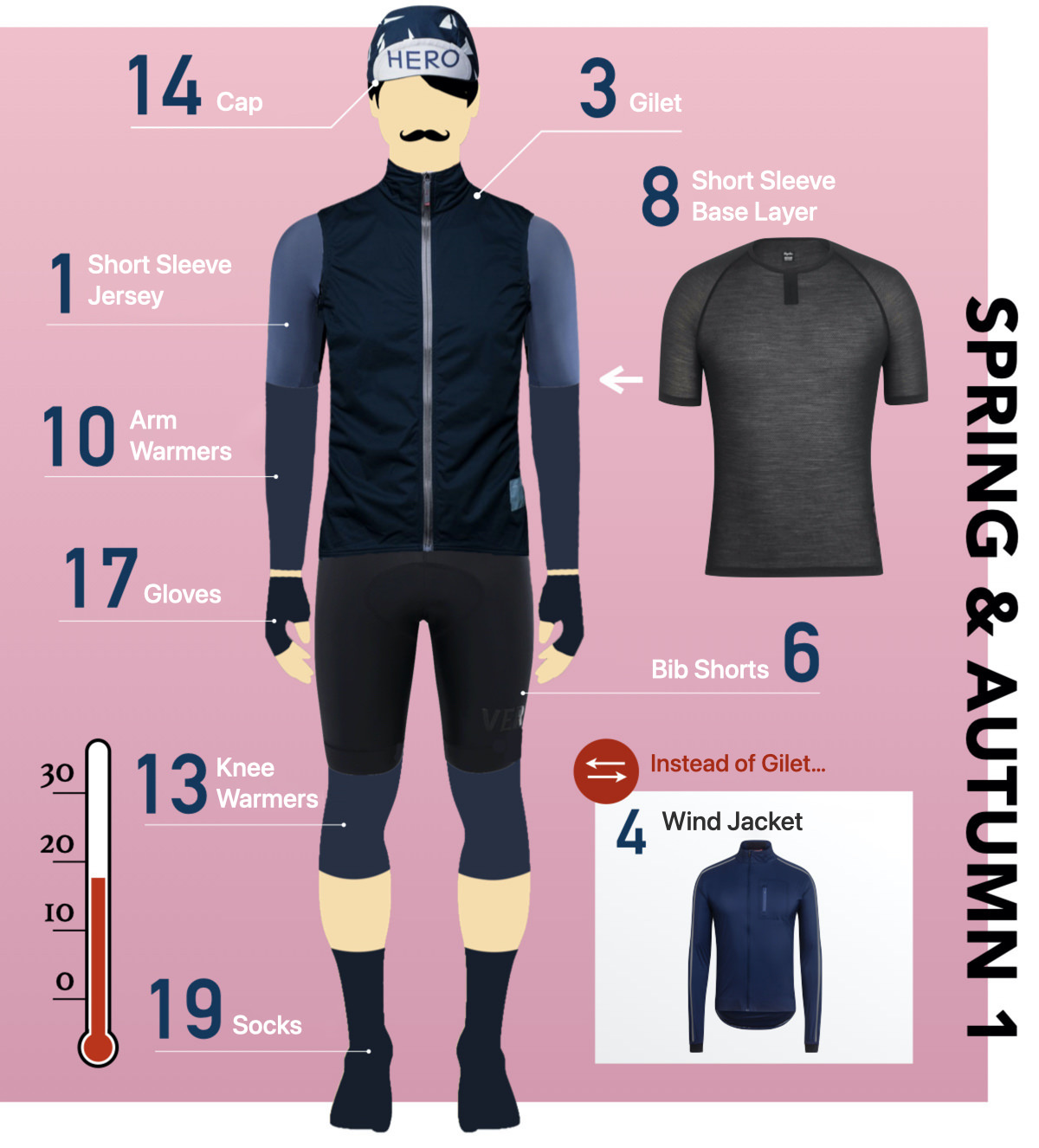
In late spring and early fall, when it is a little chilly, we layer what we need based on our summer outfits.
In particular, a lightweight gilet that keeps the torso warm is very useful*. In climates where you want to windproof the entire upper body, a wind jacket is worn instead of a gilet. Both can be folded and placed in the back pocket for easy adjustment.
If you are concerned about cold feet, wear knee warmers.
*For more information on how to wear the gilet, click here.
5°C to 15°C
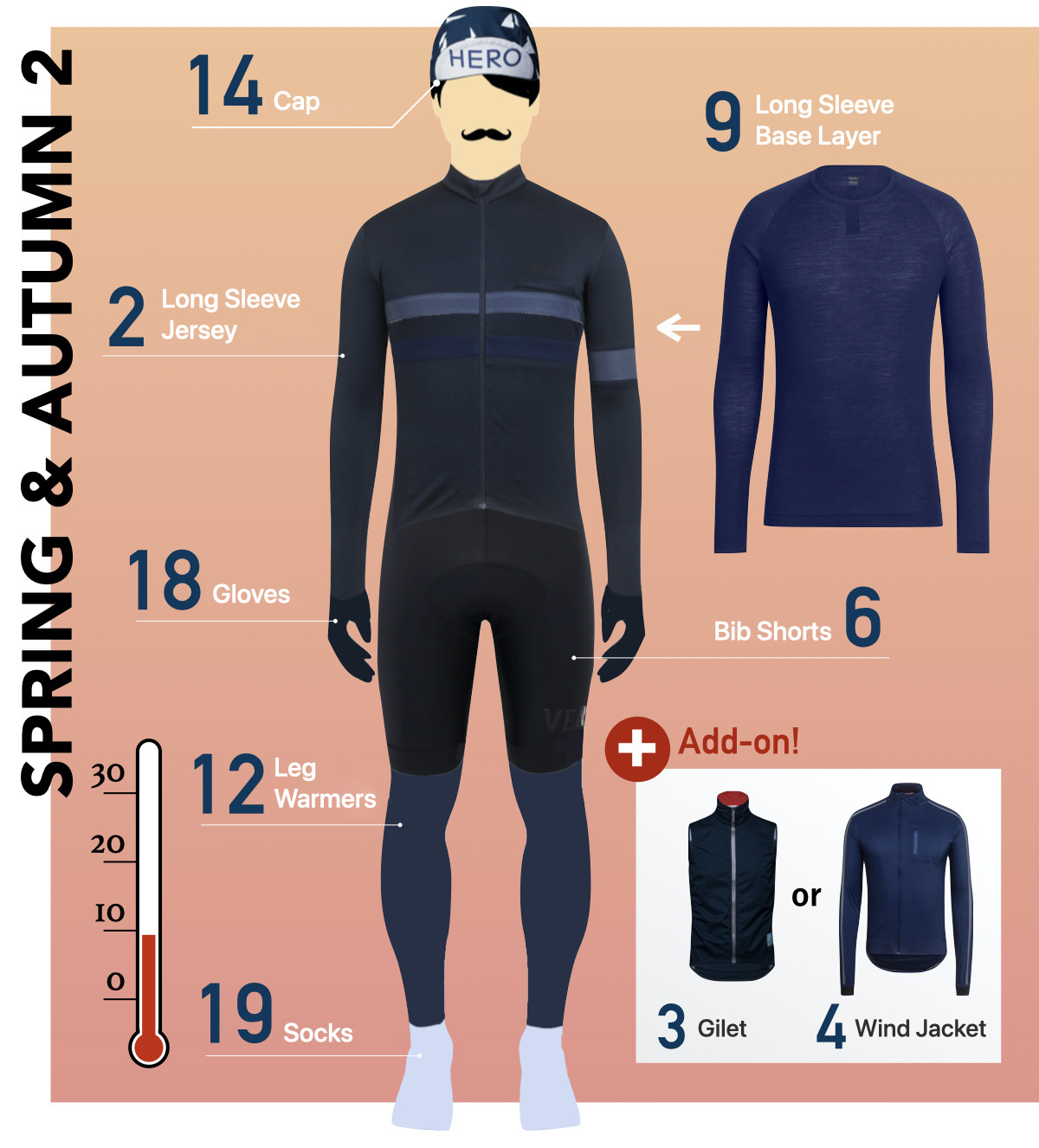
Long sleeve jersey is useful in cold weather in the 10°C range. It can be combined with a long-sleeved base layer to adapt to lower temperatures than short-sleeved jerseys + arm warmers.
Don’t forget to wrap your legs warmly with leg warmers (or knee warmers) as well. Also, a gilet or wind jacket will work great here.
Outfit for Winter
0°C to 5°C
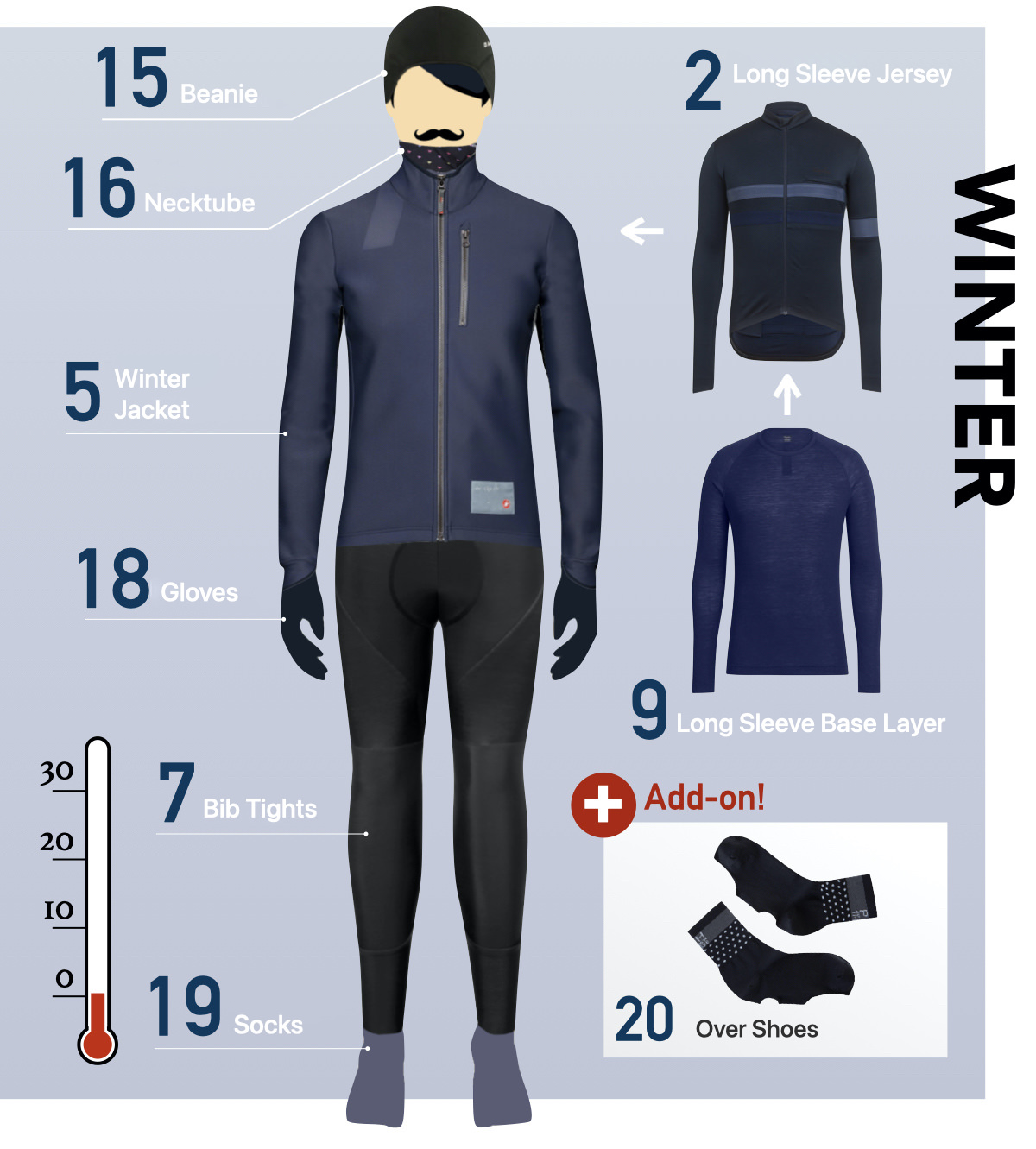
The most important points of winter outfit are to avoid exposing skin and to shut out the wind completely. If you wear too much, you may sweat cold, so choose a jacket with good thermal protection and keep layering to a minimum.
Depending on the thickness of the jacket, it may not be necessary to wear a long sleeve jersey inside, but instead just one base layer or a combination of two layers* (short sleeve base layer → long sleeve base layer) is OK.
The lower half of the body should also be well protected with bib tights made of raised material (or, if you prefer, select winter bib shorts + leg warmers).
3. Dressing Tips
Choose clothing based on the maximum temperature of the destination.
In spring and fall, when temperatures vary widely, it can be difficult to know which time of day to adjust to the temperature.
Basically, we recommend that you carry items that are easy to adjust, such as a gilet or wind jacket, and think about coordinating your outfit to be comfortable at the highest temperature of the day.
For example, if the temperature is 8°C in the morning and 18°C during the day, you can adjust by putting a wind jacket over your spring and fall coordinates and taking it off and putting it in your back pocket when it gets hot.
Consider the strength of the ride
In addition to temperature, the clothing requirements will vary depending on the intensity and style of the ride.
The clothing required for a flat ride at a certain intensity will differ from that for a hill climb over a long mountain pass, and the more the intensity changes, the finer adjustments will be necessary. Select the best coordination according to your own riding style.
Cherish the feeling of being outside.
Sometimes the temperature in the weather forecast may not be correct, so your own skin sense is also important for such occasions. Especially outside of summer, the perfect combination is to feel “a little cold” when you go outside. If you start running as it is and your body warms up, you will be comfortable.
On the other hand, if you feel “warm in this wear,” you may be a little overdressed. It may become hot when you run, so you will go back home and adjust it before you regret it.
* * *
You may be a little fed up with the sheer number of items you need, since the price of each piece of cycling equipment is high.
Even so, one of the most enjoyable parts of the cycling hobby is to gradually assemble your favorite clothing items. Please enjoy riding comfortably while having fun with color matching.
Find Cycling Clothing
Author
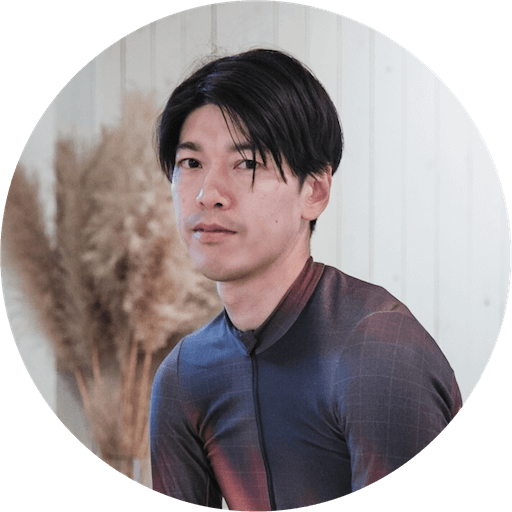 |
Tats Shimizu(@tats_lovecyclist) Editor in Chief. Having been riding sports bikes for 10 years. He likes to unravel the trends in the sport bike industry, especially road bikes, from a marketing perspective. At the same time, he has extensive friendships with cycling apparel brands from around the world and proposes various styles through the media. His main bikes are Factor O2 (road) and LS (gravel). |

















